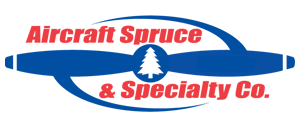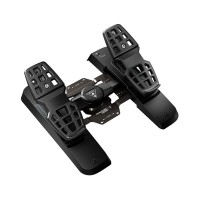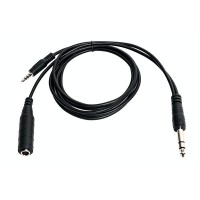THE AVIATION SUPERSTORE FOR ALL YOUR AIRCRAFT & PILOT NEEDS | 877-4-SPRUCE
Orbiter (L) Discovery Model
$195.75/Each
Part# 13-11080
MFR Model# KYNASAO2T
MFR Model# KYNASAO2T
Overview
|
The Space Shuttle Orbiter is the Orbital vehicle of the Space Shuttle and is a mixture of rocket, spacecraft and aircraft. It is a reusable winged ""spaceplane"" and it launches crew and payload into Earth orbit and performs on-orbit operations. Individual Orbiters are both named and numbered, a similar manner to ships by the NASA Orbiter Vehicle Designation system. All Orbiters external structures are very similar, though they have minor differences such as new equipment fitted on a rotating basis for maintenance and the newer Orbiters tend to be structurally lighter. The first test Shuttle, the Enterprise, was designed for testing the Space Shuttle behavior in atmospheric flight. Columbia, first launched on April 12, 1981 and the first space shuttle to fly into orbit. Challenger, first launched on April 4, 1983 and the second orbiter to become operational at Kennedy Space Center in Florida. Discovery, first launched on August 30, 1984, has flown 33 missions and is still currently operational though Discovery will be retiring in 2010. Atlantis, first launched on October 3, 1985, has flown 26 missions and is still operational today but will be retiring also in 2010. And the Endeavor, first launched on May 7, 1992 and has flown 19 missions and still operational but is due to retire also in 2010. The Orbiters crew cabin has a flight deck, mid-deck and utility area. The Orbiter has a large payload bay at about 60 by 15 feet. There are three Space Shuttle Main Engines (SSMEs) mounted on the Orbiters aft fuselage in a triangular pattern. The aft fuselage houses three auxiliary power units. The Orbiter structure is primarily made from aluminum alloy, although the engine thrust structure is made from titanium alloy. Space Shuttle Orbiters support scientific experiments and observations, spacecraft deployment, retrieval, service and repair, assembly of large space structures, such as the International Space Station and other various space operations. |
WARNING: Cancer and Reproductive Harm - www.P65Warnings.ca.gov. |
Q&A
Please note, Aircraft Spruce ®'s personnel are not certified aircraft mechanics and can only provide general support and ideas, which should not be relied upon or implemented in lieu of consulting an A&P or other qualified technician. Aircraft Spruce ® assumes no responsibility or liability for any issue or problem which may arise from any repair, modification or other work done from this knowledge base. Any product eligibility information provided here is based on general application guides and we recommend always referring to your specific aircraft parts manual, the parts manufacturer or consulting with a qualified mechanic.








 FREE Shipping
FREE Shipping



